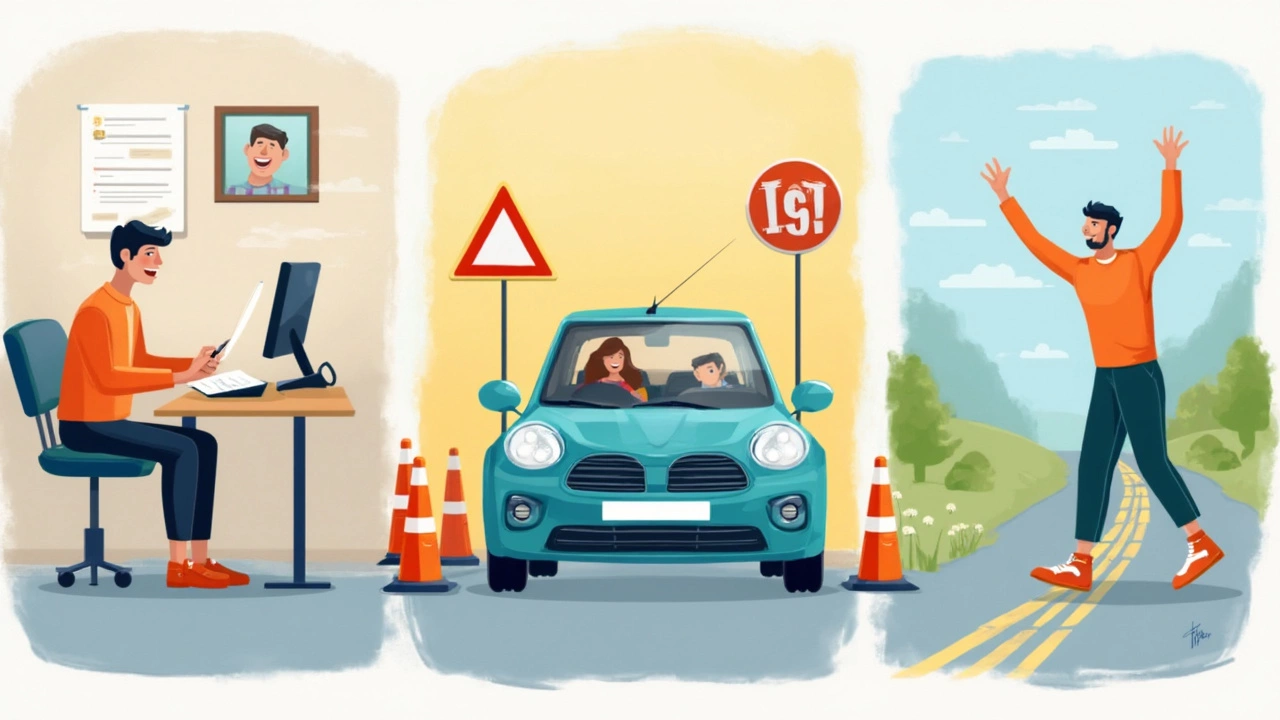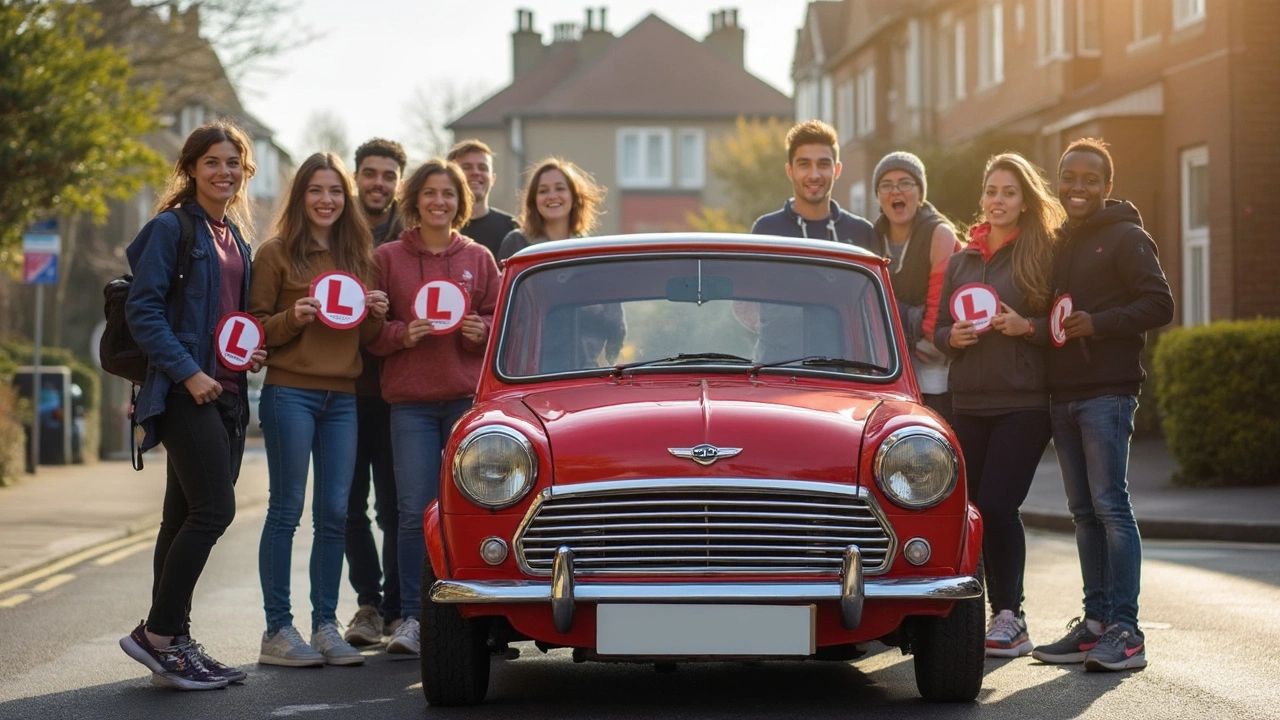Still counting weeks or months until you’ll finally get that shiny license? Here’s the truth: it’s not just about hours behind the wheel — your mindset, your instructor, and how you practice can speed things up or leave you stuck. Some folks pick it up in a flash, others need more time, but either way, knowing what really matters makes the whole thing less of a drag.
Forget the magic number you might have heard — there’s no set rule for how long learning to drive takes. Some pass their test after a handful of lessons, while others need a bit longer to feel confident on the road. Most of the time, it depends on how often you practice and how well you handle learning under pressure. You can hack the process if you know where to focus — and we’ll get into that in a minute.
- What Actually Affects Your Learning Speed
- How Many Lessons Do Most People Need?
- Faster Learning: Tips That Work
- Avoiding Common Pitfalls
What Actually Affects Your Learning Speed
If you’re itching to know how long it’ll take you to learn to drive, there’s more at play here than just showing up to lessons. Everyone learns at their own pace, but a few key things make a big difference in how fast you’ll pick it up.
- How often you practice: People who drive two or three times a week lock in skills way faster than those going once a week and forgetting half of what they did between sessions.
- Quality of instruction: Some driving instructors are patient and explain things clearly, while others just run through checklists. A good match with your instructor actually matter more than you’d think.
- Your nerves: Nervous drivers often take longer because anxiety makes it tough to focus. Simple tricks—like driving quiet roads first—can help.
- Where you practice: Busy city? Country roads? Learning in heavy traffic can be harder at first, but pays off if you pass your test there.
- Previous experience: If you’ve spent years cycling or riding scooters, your road sense is ahead of the game. Gaming enthusiasts sometimes react faster to hazards, oddly enough, because their reflexes are trained.
If you’re curious what this looks like in real numbers, check out this breakdown from a 2024 DVSA report of average hours people spent before passing their test in the UK:
| Type of Practice | Average Hours to Pass |
|---|---|
| Professional lessons | ~45 hours |
| Private practice (with family/friends) | ~20 hours |
| Total combined practice | ~65 hours |
Those are averages. If you already know the basics, or if you practice more outside of lessons, your number could be a lot lower. The key is to keep your practice regular and a little bit challenging each time—you don’t want to get bored or sloppy.
How Many Lessons Do Most People Need?
If you’re aiming to figure out how many driving lessons it takes for the average person, here’s the quick answer: in the UK, recent stats from the DVSA say most learners need about 45 hours of professional lessons plus 22 hours of private practice. That’s a ballpark, not a rule. Some people get it faster; others need extra time, especially if nerves or complicated roads slow them down.
| Country | Average Professional Lessons | Extra Private Practice |
|---|---|---|
| UK | 45 hours | 22 hours |
| USA | 20-50 hours* | Varies by state |
| Australia | 25-30 hours | Up to 120 hours total required in some states |
*In the USA, the number of hours can change a lot depending on the state rules. For example, California asks for 6 hours of professional instruction but 50 hours’ worth of parent-supervised practice.
The key thing isn’t just the number of hours—it’s what you do with them. You might spend 30 hours just going in circles around a parking lot but not know how to handle a roundabout or heavy traffic. Mixing up your routes and practicing tricky stuff—like parallel parking or high-speed merging—makes sure you’re actually ready for real roads.
According to the DVSA’s lead examiner, “The learners who pass quickest are the ones who practice little and often, not stuffing it all into one frantic week.”
“Good practice between lessons speeds things up—drive in different conditions and at different times. If you cram all your practice into short bursts, you’ll forget stuff. Spread it out and make it stick.” – DVSA Examiner, 2024
Bottom line? Most folks need more than a dozen driving lessons to get good enough for the test, even if they’ve picked up some tips from family or friends. If you want to speed things up, focus on quality of practice, not just piling up hours.

Faster Learning: Tips That Work
If you want to get your license sooner, you need to approach learning smart—not just hard. These tips will get you moving in the right direction, whether you’re just getting started or you keep stalling at roundabouts.
Learn to drive the right way by sticking to short, regular sessions. Around 2–3 lessons per week helps your brain remember stuff better instead of trying to cram everything into a long, exhausting day. Mixing in private practice with a family member (if it’s legal in your area) can double your confidence too.
- Pick the right instructor: Not all instructors are equal. Look for someone with good reviews and high pass rates. This isn’t just about their teaching; it’s about how comfortable you feel in the car with them.
- Go automatic if you can: Stats from the UK show automatic learners often pass faster. You don’t have to mess with gears, so you can focus on the rest.
- Study the theory early: If you get a grip on road signs, rules, and hazard spotting before lessons, your driving practice goes smoother. Use free apps or online mock tests for this part.
- Make your practice real: Don’t just drive around quiet backroads. Mix in city roads, roundabouts, and even nasty weather when you’re ready. This gives you fewer surprises on test day.
Here’s a quick side-by-side look at how different kinds of practice stack up:
| Lesson/Practice Style | Usual Pass Rate (%) | Weeks to Test (Average) |
|---|---|---|
| 2+ Professional Lessons/Week | 62 | 6-8 |
| 1 Lesson/Week + Private Practice | 67 | 6-10 |
| 1 Lesson/Week Only | 54 | 12-16 |
Finally—everyone messes up sometimes. The trick is to ask your instructor for feedback you can actually use, and don’t just brush off mistakes. Fixing what trips you up is the real shortcut.
Avoiding Common Pitfalls
So many people drag out learning to drive way longer than it should take. Why? They get tripped up by the same mistakes over and over. Knowing what to avoid saves you both time and money. Let’s call out the big ones so you can dodge them early.
- Skipping regular practice: Gaps between lessons make you forget skills. Driving is muscle memory, and consistency counts more than cramming a bunch of lessons into a single week.
- Not practicing in different conditions: If you only drive when it’s sunny with your instructor, your first rainy test day will feel like a nightmare. Mix it up — drive after dark, practice turning at busy junctions, or deal with a sudden downpour.
- Ignoring feedback: Some learners get defensive or zone out when instructors point things out. Honest, specific feedback (even if it stings a bit) is pure gold — that’s how you fix issues before they sink you on test day.
- Too much focus on theory, not enough on real driving: Passing the theory test is great, but it won’t save you if you panic at a roundabout in real life. Get out of your comfort zone and face those tricky spots in practice.
- Poor test timing: Rushing into the test before you’re ready is a massive wasted chance. On the flip side, stalling for months out of nerves can also hurt. Know when you’re ready, and commit.
Check these numbers — they don’t lie. The learn to drive process usually looks like this for most UK learners:
| Aspect | Average Number/Time |
|---|---|
| Total lessons needed (UK) | 45 professional lessons + 22 hours private practice |
| First-time pass rate (practical test, 2024) | Approx. 48% |
| Common fails | Junctions (observation), Mirrors (change direction), Control (steering) |
If you skip around and don’t tackle weak spots, you’ll probably end up in the same situations where half the test-takers fail every year. Honest self-checks and listening to your instructor corners are just as important as actual driving time.

